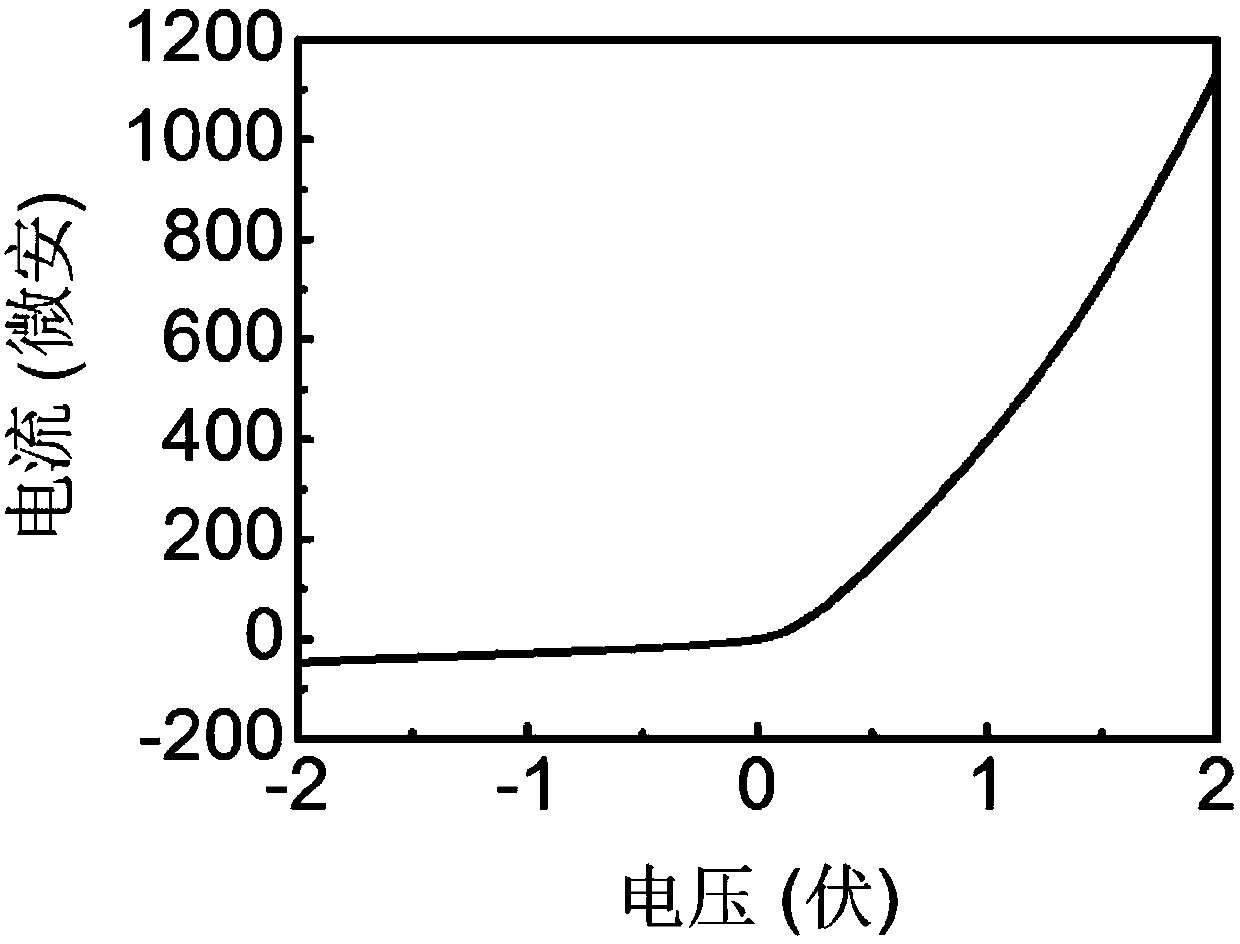A zinc oxide nanorod/black silicon heterojunction nanophotodetector and its preparation method
A zinc oxide nanorod, photodetector technology, applied in the field of photodetectors, can solve the problems of small photosensitive area, insufficient absorption of incident light, low sensitivity, etc., to increase the photosensitive area, overcome large transmission loss, and improve sensitivity Effect
- Summary
- Abstract
- Description
- Claims
- Application Information
AI Technical Summary
Problems solved by technology
Method used
Image
Examples
Embodiment 1
[0033] like figure 1 As shown, the zinc oxide nanorod / black silicon heterojunction nanophotodetector of the present embodiment uses a p-type silicon chip as the substrate 1, and a black silicon layer 2 is formed on the upper surface of the substrate 1. A zinc oxide nanorod array layer 3 is formed on the silicon layer 2; a top electrode 4 is arranged on the zinc oxide nanorod array layer 3; a bottom electrode 5 is arranged on the lower surface of the substrate 1. Wherein, the zinc oxide nanorods constituting the zinc oxide nanorod array layer 3 grow vertically to the black silicon layer. The surface of the p-type silicon wafer is formed with a pyramid structure. Both the top electrode 4 and the bottom electrode 5 are silver electrodes formed by applying silver paste.
[0034] The nano photodetector of the present embodiment is prepared according to the following steps:
[0035] 1. Use acetone, alcohol and pure water to ultrasonically clean the p-type silicon wafer, and then ...
Embodiment 2
[0049] The structure of the zinc oxide nanorod / black silicon heterojunction nanophotodetector of this embodiment is the same as that of Example 1, and the preparation method is basically the same, the only difference being that the growth solution in step 5 is: 0.2g zinc nitrate hexahydrate and 0.21g urotropine was dissolved in 30mL water.
[0050] The field emission scanning electron microscope picture (top view) of the zinc oxide nanorod array grown on the black silicon layer of the present embodiment is as Figure 6 As shown, it can be seen from the figure that when the concentration of zinc nitrate hexahydrate is relatively small, the diameter of the grown zinc oxide nanorods is relatively smaller and denser at the same time.
Embodiment 3
[0052] The structure of the zinc oxide nanorod / black silicon heterojunction nanophotodetector of this embodiment is the same as that of Example 1, and the preparation method is basically the same, the only difference being that the growth solution in step 5 is: 0.6g zinc nitrate hexahydrate and 0.21g urotropine was dissolved in 30mL water.
[0053] The field emission scanning electron microscope picture (top view) of the zinc oxide nanorod array grown on the black silicon layer of the present embodiment is as Figure 7 It can be seen from the figure that when the concentration of zinc nitrate hexahydrate is relatively high, the diameter of the grown zinc oxide nanorods is relatively larger and more sparse.
PUM
 Login to View More
Login to View More Abstract
Description
Claims
Application Information
 Login to View More
Login to View More - R&D Engineer
- R&D Manager
- IP Professional
- Industry Leading Data Capabilities
- Powerful AI technology
- Patent DNA Extraction
Browse by: Latest US Patents, China's latest patents, Technical Efficacy Thesaurus, Application Domain, Technology Topic, Popular Technical Reports.
© 2024 PatSnap. All rights reserved.Legal|Privacy policy|Modern Slavery Act Transparency Statement|Sitemap|About US| Contact US: help@patsnap.com










